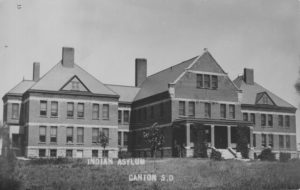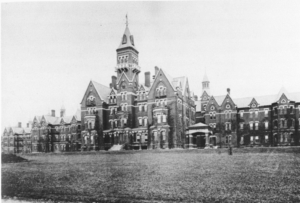By the end of what might be called the “asylum era,” most superintendents or administrators were buried under mountains of paperwork. Almost all public facilities were overcrowded and understaffed, which meant poor care and more problems and incidents that needed the administrator’s attention than if they had been smaller and better manned. However, the situation at the Canton Asylum for Insane Indians was always somewhat different.
The asylum’s administrator, Dr. Harry Hummer, ran an extremely small facility. The organization of superintendents that developed standardized asylum care in the 1840s decided that 250 patients was the maximum that any good facility should contain. They later raised it to 500, which was still considered a manageable number. During the bulk of his time at the Canton Asylum, however, Dr. Hummer had well under 100 patients.
When Canton Asylum was inspected in 1933 by St. Elizabeths’ psychiatrist, Dr. Samuel Silk, he noted that Dr. Hummer could give him next to no information about most of his patients: “the patients’ behavior or other events which led to their admission. . . . Apparently Dr. Hummer did not consider such information necessary and he took no steps to obtain it.
“In the cases of various patients who were alleged to have assaulted others, Dr. Hummer knew nothing about the circumstances of such assault . . . . Many such patients have been in the institution six, eight or more years and for a number of years they have showed no abnormal behavior justifying their detention.”
Many of Canton Asylum’s patients would have been better off with a jail sentence for their behavior, since a sentence for assault would have come with a limit. At the asylum, Dr. Hummer’s indifference generally led to a life sentence unless some sort of outside intervention occurred.





